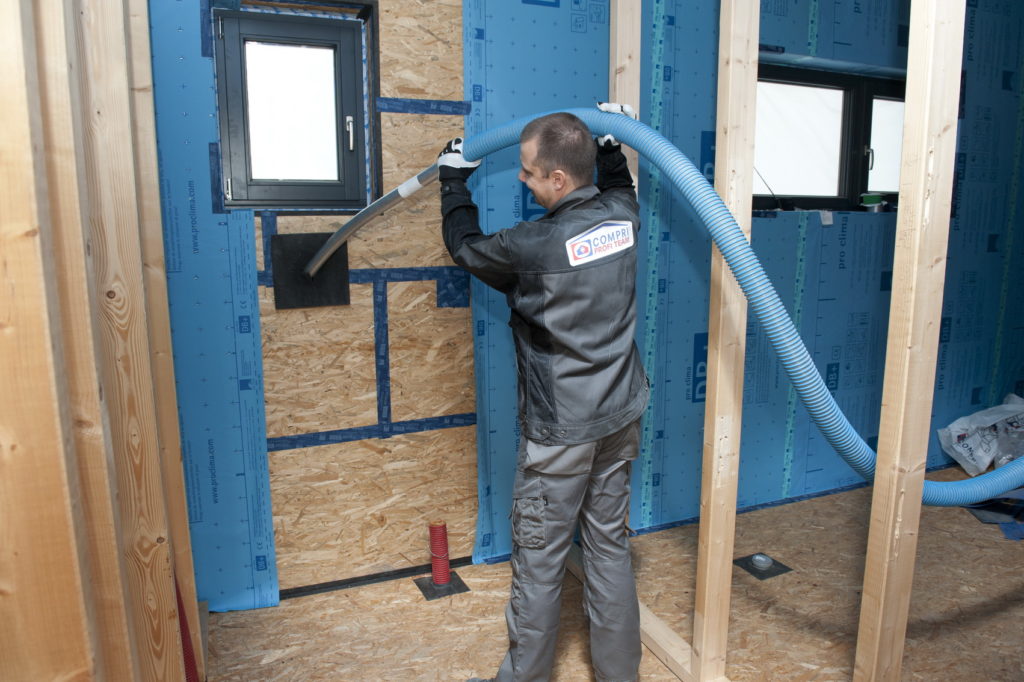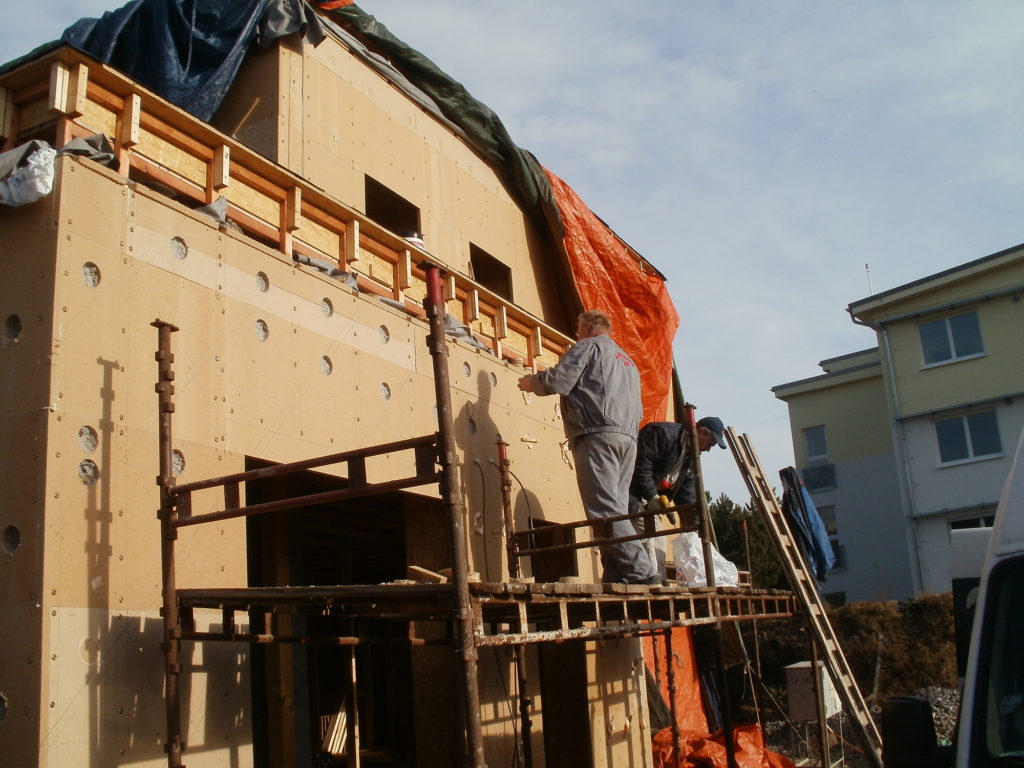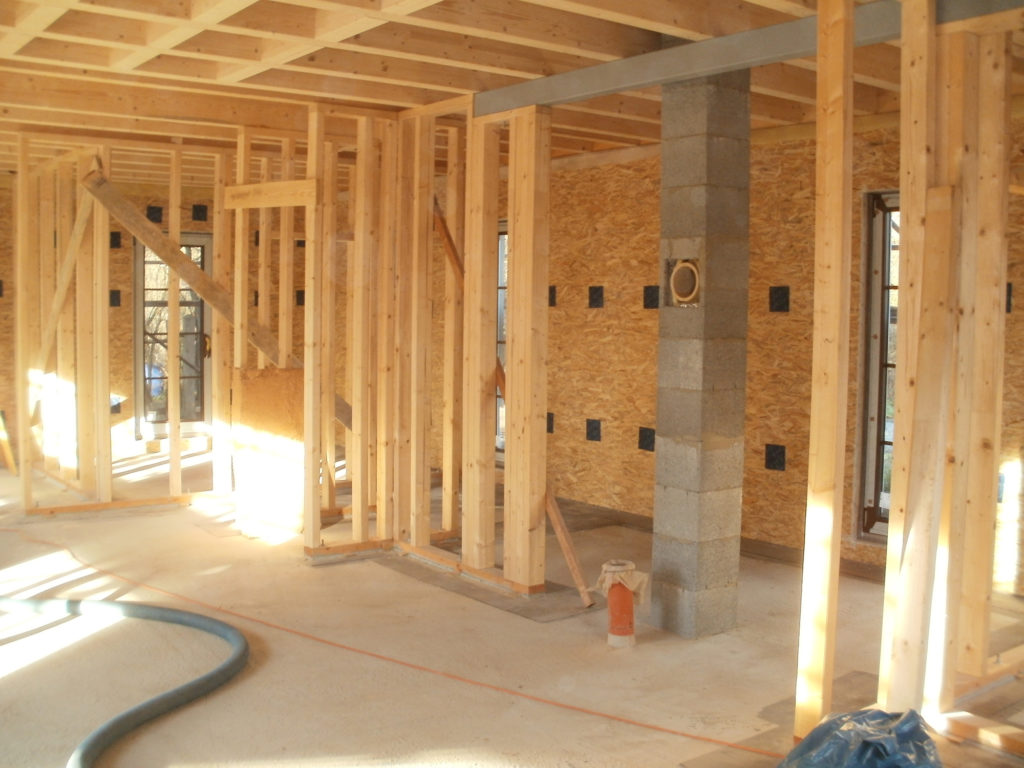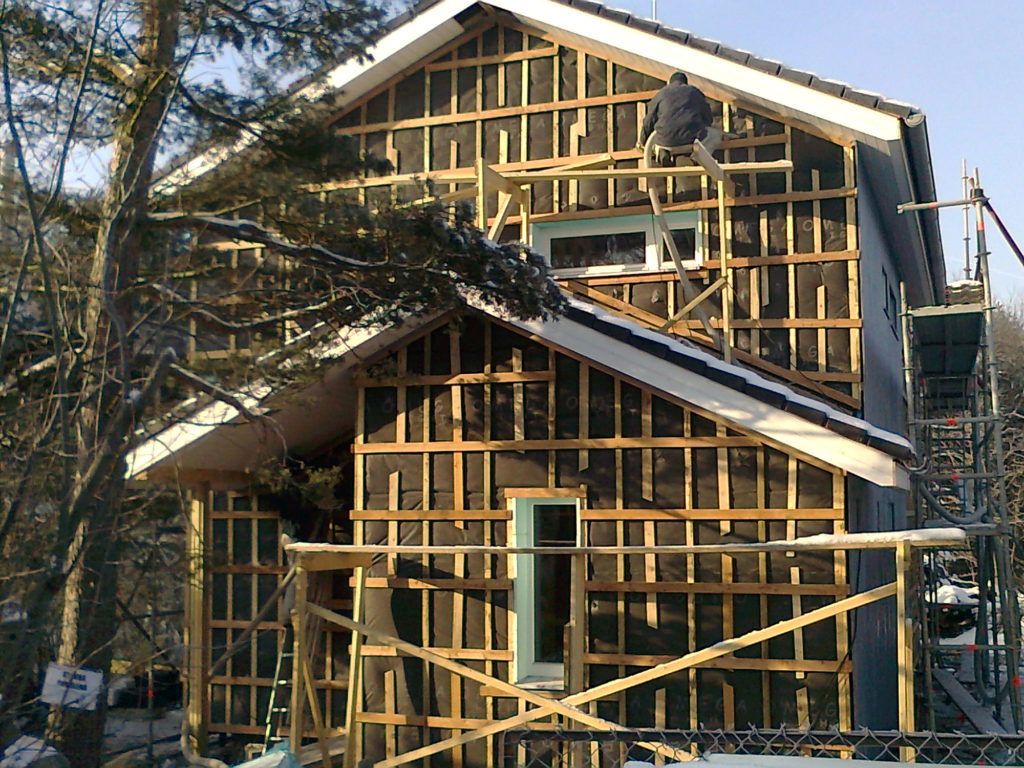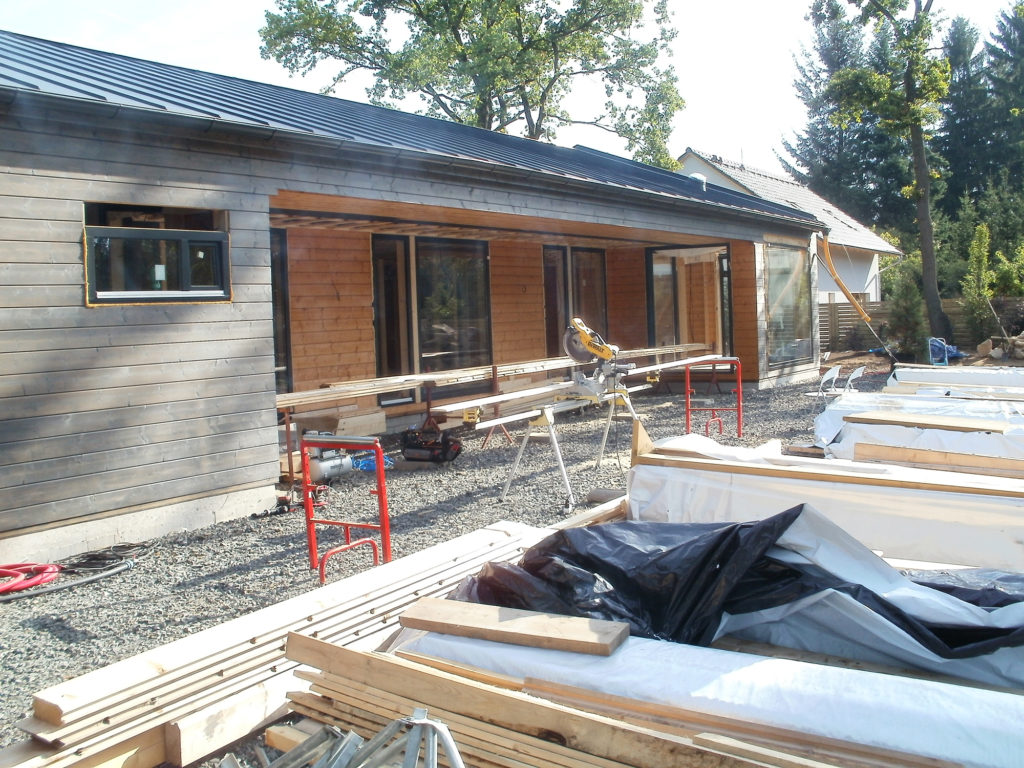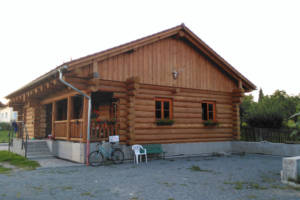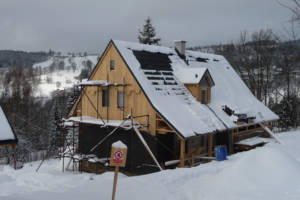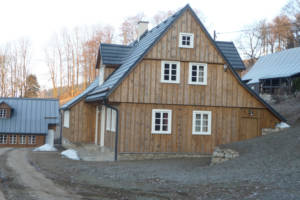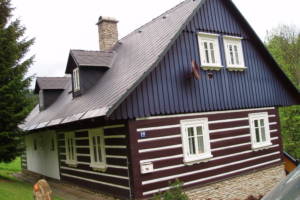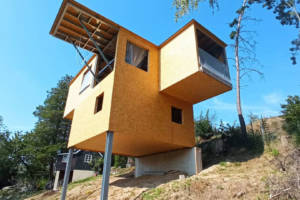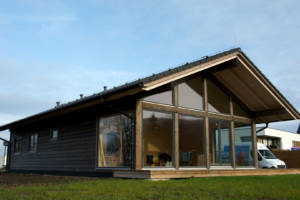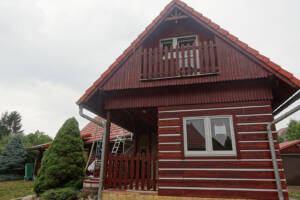Blown cellulose insulation Climatizer Plus is ideal for insulating all structures of Timber Frame buildings. Due to its high density, Climatizer Plus provides excellent thermal and acoustic properties when used in wooden buildings. Climatizer Plus cellulose insulation is one of the few cellulose insulations that can control the level of moisture in the structure and fills timber frame panels completely to a high density leaving no gaps or cracks.
Controls humidity and stabilises temperatures with exceptional reliability
Natural insulation can work reliably and effectively even with moisture and heat accumulation like no other insulation. Climatizer Plus can absorb moisture into its cellular structure thus controlling the humidity levels. To release moisture back into the interior, it is necessary to have a vapor barrier membrane in the wall structure that enables this principle (e.g., pro clima Intello). After insulating the timber frame building, Climatizer Plus can effectively control moisture levels and thus prevent the formation of mould. The risk of mould, fungi and allergen formation is minimized. Cellulose insulation can thus support a healthy indoor environment of the building.
Protects the wooden structure from the heat and protects against fire
The fire-resistant properties of Climatizer Plus cellulose insulation are classified in the reaction to fire class C-s1,d0 when blown freely and when applied in the panel cavity to class B-s1,d0 are also very good.
The value of the specific heat capacity is unique – up to 2141 J/kg*K, which reduces the risk of heat accumulation to wooden structure. Cellulose insulation retains heat for up to 7 hours. In the summer months, this provides better thermal comfort in the building, and in the winter reduces heat source consumption resulting in a reduction in energy bills.
Excellent acoustics
Climatizer Plus Cellulose insulation due to its volume ensures sufficient sound attenuation. However, in certain places within the building it is necessary to use an alternative acoustic solution. For example, ultra-thin Wolf acoustic boards are used that provides excellent results in the composition of the beamed ceiling.
In new constructions applying thermal and acoustic insulation Climatizer Plus can be done in two ways:
- Fill the material into the structures directly on the construction site (savings achieved in terms of material consumption – application according to the needs of the structures and their slopes), this method is also suitable due to the possibility of isolating small details created during assembly
- Fill prefabricated constructions directly during their production in the factory (volumetric weight of material 65 to 70 kg/m3), where high technological discipline must be observed
Panels and front walls
Advantages of using Cimatizer Plus blown cellulose insulation in the production of Timber Frame building panels are there is no waste of product and a perfect coverage in the space.
It is advantageous to use an installation pre-wall. After the distribution is applied, the wooden grate is sprayed with insulation, which will significantly improve the acoustics and increase the thermal resistance of the structure. If the front wall is up to 6 cm thick, it is not necessary to solve the vapor barrier plane (an OSB board in the perimeter wall is sufficient) due to the natural ability of the cellulose insulation to actively transport moisture.
How does humidity affect the quality of insulation?
The Danish Energy Agency conducted research in both cold and temperate climates in Belgium, Finland and Denmark, which looked at how the moisture content of facade structures affects the insulating properties of natural cellulose insulation and stone wool.
The conclusion was that only natural material can safely cope with moisture even in larger insulation thicknesses.
It means that with natural cellulose insulation in the structure, conditions for the formation and growth of mould, rot and wood-decaying fungi will not arise.
In low-quality constructions with synthetic board insulation, which cannot work properly with moisture, problems with moulds and fungi can arise.
How does natural cellulose insulation work with moisture in the mild climate of the Czech Republic?
Climatizer Plus natural cellulose insulation can safely work with air humidity. The moisture content of the insulation during the monitoring period of the Danish Energy Agency research was 10% in summer and 18% in winter.
The correct choice of insulation will thus protect Timber Frame constructions reduces the risk of wood-rotting fungi and mould. Standards in the Czech Republic allow a limit value of 20% moisture content in wood for house construction.
Source of the research: In 1998, the Danish Energy Agency funded research, the aim of which was to find out how the moisture content affects the insulation properties of selected facade elements.
The main reasons for using Climatizer Plus in Timber Frame buildings:
- Heat accumulation = higher thermal stability of the building in summer and winter
- Active transport of moisture, especially important for diffusely open structures
- The best-selling healthy natural insulation = a healthy indoor environment without mould
- Speed of warming the entire house from floor to roof = economically efficient insulation
- High fire resistance
- Protection against rodents
Selected references
We have already insulated many Timber Frame buildings, here are some examples of them. You can find more in our references.

